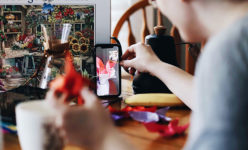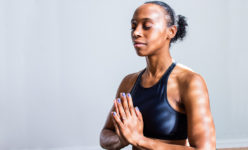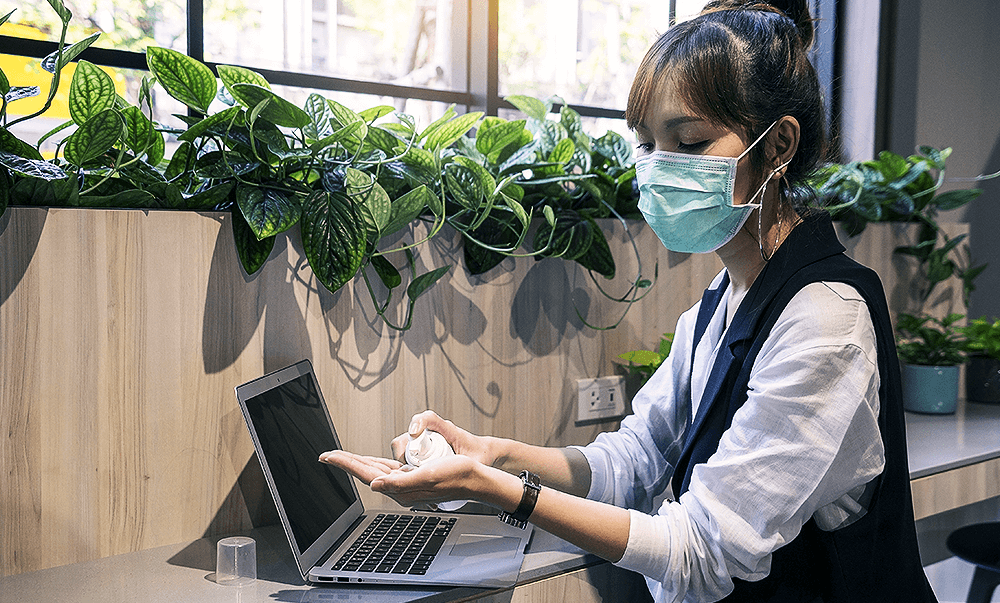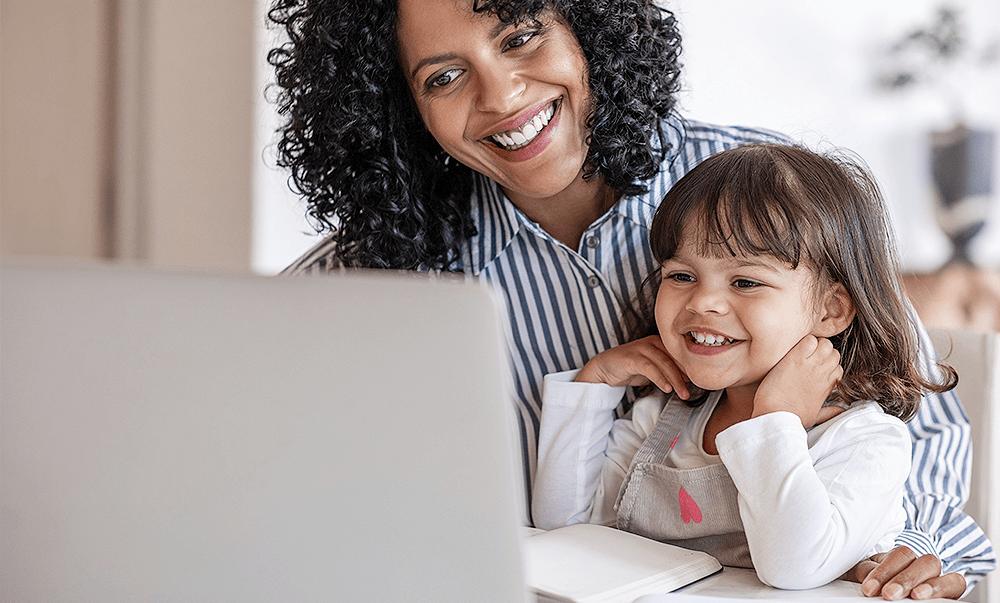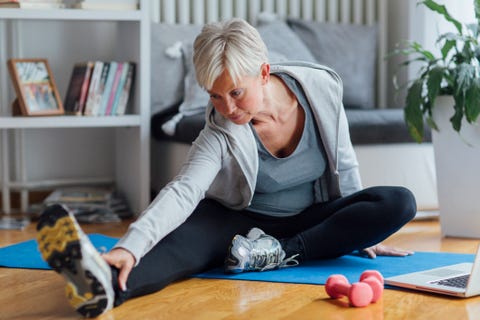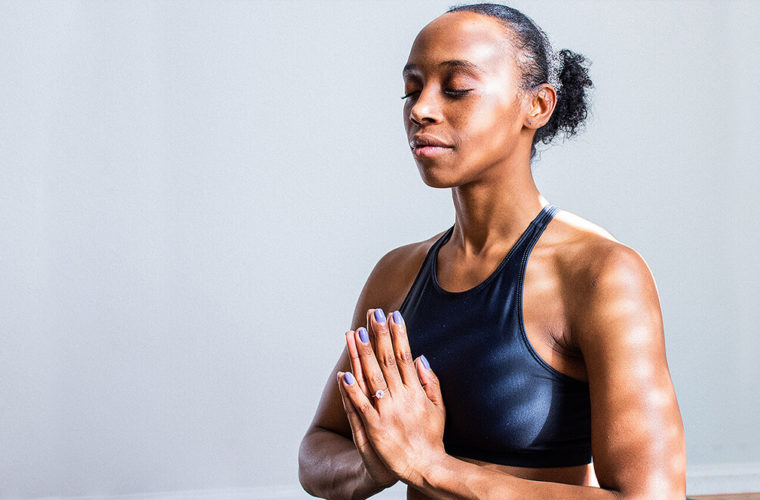
11 ways to stay fit and healthy while you’re self-isolating
The prospect of staying at home for any prolonged period of time can seem overwhelming and a little scary, especially if you’re someone who enjoys keeping fit and active and hitting that daily step count, or an older person who might be worried about feeling isolated. Rather than letting the isolation scare you, why not, instead, try and embrace it as an opportunity to get your sweat on with new, at-home workouts you’ve never tried before, incorporate more simplistic healthy habits into your daily routine and mix things up a little. Golf fan? Time to try yoga. Love a walk? Why not try guided meditation videos. With tips from three experts in the industry, remember self-isolating doesn’t mean sitting down for several weeks: far from it with these easy-to-follow and tangible tips. Whether staying active, to you, looks like yoga in the living room, running up the stairs or having a go at weighted arm exercises with tins from your cupboard, there are plenty of ways to keep moving even when you can’t get outside. Lacking motivation without a class to book into or a park to plod around? Remember, staying active has been scientifically proven to benefit your mood and overall well being, thanks to the ‘happy hormone’ endorphins you release when you get your heart-rate up. Here, the experts explain how to keep moving from the comfort of your own home. Related: Ways to reduce stress While you may not be able to stick to your normal routine—you know, of leaving the house, going shopping, meeting friends for coffee and doing your usual physical activities, you can create a new routine at home which includes alternative ways to keep active. As tempting as it may be to stay in bed and work in your PJs, in the long run this is bound to have a detrimental effect on your overall mood. Try: For example, getting up at the same time every day, doing a workout first thing (more on this to come), taking a shower and making a nice breakfast, if that order appeals to you. There are loads of studies backing up the benefits of routine on positive mental health, and it’s something Mind UK recommends for “staying grounded”. Whether you’d rather just have a bit of a stretch on your bedroom floor when you wake up or actually set aside half an hour or so every day to do a guided yoga routine, moderate stretching or yoga style movement will help avoid stiff joints and maintain good blood circulation. It’s worth noting here that there are actually lots of different types of yoga: from the more dynamic, designed to make you get a sweat on and ‘work out’, to the more steady Vinyasa flows, for those needing a stretch after sitting down all day, says Laura Hoggins, personal trainer and author. Whichever you fancy, there are hundreds of free flows available to stream on YouTube, but the Yoga with Adriene yoga routines are particularly simple and easy to follow, with the instructor guiding you through what to do step-by-step and different yoga for different vocations, ages and needs. Why yoga? There are heaps of studies, but many show regularly practicing yoga can help improve heart health and reduce risk factors for heart disease. One particular bit of research discovered that yogis over 40 years old who’d been practicing for more than five years had a lower blood pressure and pulse rate than those who didn’t. Plus, we all need a little zen at the moment. Try: A Yoga with Adrienne YouTube video. Start with the shorter five and ten minute videos, if you’re not sure where to start, or her specifically designed “Yoga for Seniors” half an hour flow, designed to be slow and gentle. Related: Change Your Life with the Motivational Power of Yoga Dig out your old GSP workout DVD and stick it on the television, or, if you don’t have any DVDs, try one of Joe Wicks’s many at-home workouts. There are hundreds to choose from on his YouTube channel, totally free of charge and tailored for different ages and abilities, so there’s no need to feel overwhelmed or like you don’t know which one to go for. Wondering how to watch and work out at the same time? If you have a mobile phone connected to WiFi, you can stream the workout video on there, although you’ll have a much better view if you load the workout on a computer or your television. Water and sweat towel at the ready. You know exercise is good for you—but do you know why? Well, the NHS website says that “physical activity can boost self-esteem, mood, sleep quality and energy, as well as reducing your risk of stress, depression, dementia and Alzheimer’s disease”. Try: Start with something low impact and designed for beginners, like this one, and working up from there, if you’re new to home workouts. Physically, the key to try and maintain hobbies that you regularly do or used to do. For example, did you know knitting is good for arthritis and keeping dexterity of movement? Try: Knitting not for you? Why not try: The concept of making makeshift weights at home can seem, well, daunting, but you can maintain that strength training and doesn’t have to mean throwing heavy weights around the gym. While sat on the sofa, laying a pair of oven gloves over the front of each of your calves and placing a tin in each hand section. Then, gently lifting your legs up and down to maintain strength. It may feel silly at first, but it’s important to maintain leg strength with your steps likely decreasing, due to being unable to leave the house. For your arms, why not use tins as dumbbells? It’s simple: with your arms outstretched, lift your hands to shoulder height or as high as you physically can, if your shoulder movement is limited, returning to by your sides when you’ve reached as high as you can go. Personal trainer at SIX3NINE Monty Simmons says that you can add weight in more ways than just cans in the form of bags of rice, flasks of water and other bottles of liquid. Nifty. Michigan State University found that strength moves are beneficial for older adults as they not only build muscle and muscle mass but preserve bone density. Try: With both the leg weights and arm exercises, try doing each move ten times, then rest for 30 seconds, and repeat four times. You’ll maintain important leg and arm strength you can do it from the comfort of your sofa. If the idea of lifting tin cans, flour bags and water bottles doesn’t appeal to you, try getting creative with other bodyweight ways you can move inside. If you are physically able to squat comfortably, why not use the back of a stable dining chair for support? Practice your planks? Perfect your sit ups? Lunge in front of the TV? Incline press-up on the sofa? Remember that you may need to do a few more reps than you are used to to get the same burn when working out from home—of the above moves, three to four rounds of each move, eight to ten times should take around the 20 minutes—but that all movement is good. It is recommended five minutes of movement for every 30 minutes of sitting down or alternatively, two to three 20 minute bouts of exercise throughout the day. Not only will moving regularly improve your mood and keep you healthy, it will help you to stay focused. Win, win. How to: Squat Alteration: If you need extra stability in your squats, use a chair or something at arm height to hold onto while you squat. Plank Alteration: Struggling to support your full body weight off the floor? Lower yourself to your knees and build up strength from there. Sit up Alteration: If you struggle to keep your feet on the floor, you can tuck your feet under the side of the bed or a cupboard to secure you in place. Just be sure to engage the right muscles and not use this as a cheat.
Lunge Press Up Alteration: If you can’t do this with your fully body weight off the floor, lower your knees to the floor and do a half press up. Try: Set a calming alarm on your phone at three different points across the day when you know you’ll be able to pause and get some movement in. Why not try a gentle yoga stretch in the morning, walking on the spot in place of your lunch break and a workout DVD come evening? While thinking about moving more at home often takes the form of yoga and HIIT workouts, focusing on making sure you are promoting basic circulation is even more important to make sure that you don’t get stiff. Make sure you’re getting up from your chair at least every 30 minutes. Plus, flexing and rotating the lower leg while you’re sitting, if they’re able to physically too, can be a very handy trick for maintaining blood circulation. Try: Keep an eye on the time and take a stroll around your room every 30 minutes. Plus, when you are sat down, practice flexing and rotating your ankles and lower leg for improved circulation. In more ways than one—to get around, sure, but also for exercise. Take ten to fifteen minutes in the morning, at lunch and in the evening to see how many you can do, being careful not to trip and to use the banister for support where needed. Try: Taking it slowly, to start. Why not try stepping up and down the bottom step five to ten times every time you get up to get a drink or a cup of tea? It’s more about little and often with these exercises. Start with five to ten steps and gradually increase it as time goes on. Only walk faster or consider running if you’re stable: I wouldn’t encourage someone to walk faster and risk their stability. Small amounts two to four times a day is better than once and lots. If you’re someone who goes on regular walks with friends, why not FaceTime said friend and have a conversation with them while marching on the spot? Social distancing doesn’t mean not talking, it just means coming up with more creative ways to keep in touch, like FaceTime dates, phone calls and Skype sessions. Sure, walking on the spot may sound mad, but in these circumstances, will not only get you moving, but will help keep your mental health in check as you’re moving while connecting with others, too. Try: Book in a FaceTime ‘walk date’ with a family member or friend where you walk on the spot while catching up. Not as scenic as your usual walks, but guaranteed to leave you smiling nonetheless. Whether you’re eager for the walking on the spot FaceTime dates or not, keep regular phone contact with friends and family. Making an extra effort during this difficult time will not only keep everyone connected, but will help you not to feel as if you’re losing touch with the outside world. Talking to others also helps to maintain cognition and prevent depression. Try: This is especially important if you’re one of the over 70s who will potentially be isolated for a long period of time, as the government has suggested could happen. If you’ve got a grandparent or parent who’s that age, make sure to check in once a day, or once every other day. If you’re over 70 and worried, there are plenty of services available to you. During times of anxiety, it can be useful to practice breathwork or meditation to help manage your headspace. If you’re not sure what breathwork or meditation really are, it’s the practice of training the mind to a state of mental clarity that studies have found helps you deal with stress, alongside reducing levels of depression and anxiety. Try: Headspace, the world’s biggest meditation platform, today announced that it will be unlocking a free, specially-curated “Weathering the storm” collection of meditation and mindfulness content for all consumers globally on their app.
_________________________________________________________________________________________________________ __________________________________________________________________________________________________________Let our team of experts help you keep active, mentally and physically.
How to stay active while self-isolating: 12 expert tips
01 | Stick to an active routine
02 | Stretch in the living room
03 | Try an at home workout
04 | Maintain hobbies that keep you moving
05 | Practice gentle lifting exercises
06 | Up your bodyweight workouts
07 | Practice basic circulation principles
08 | Take the stairs
09 | Get creative and recreate your walks
10 | Remain in touch
11 | Learn to meditate
COVID-19: It’s OK to Feel Overwhelmed and Isolate at home

